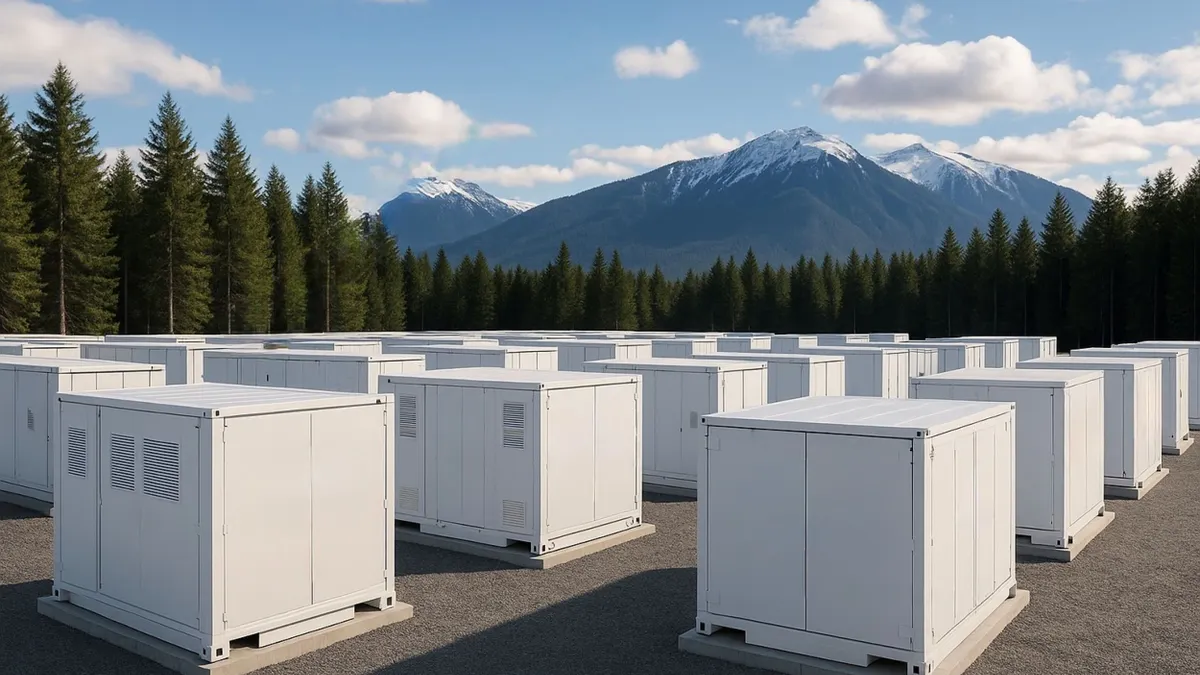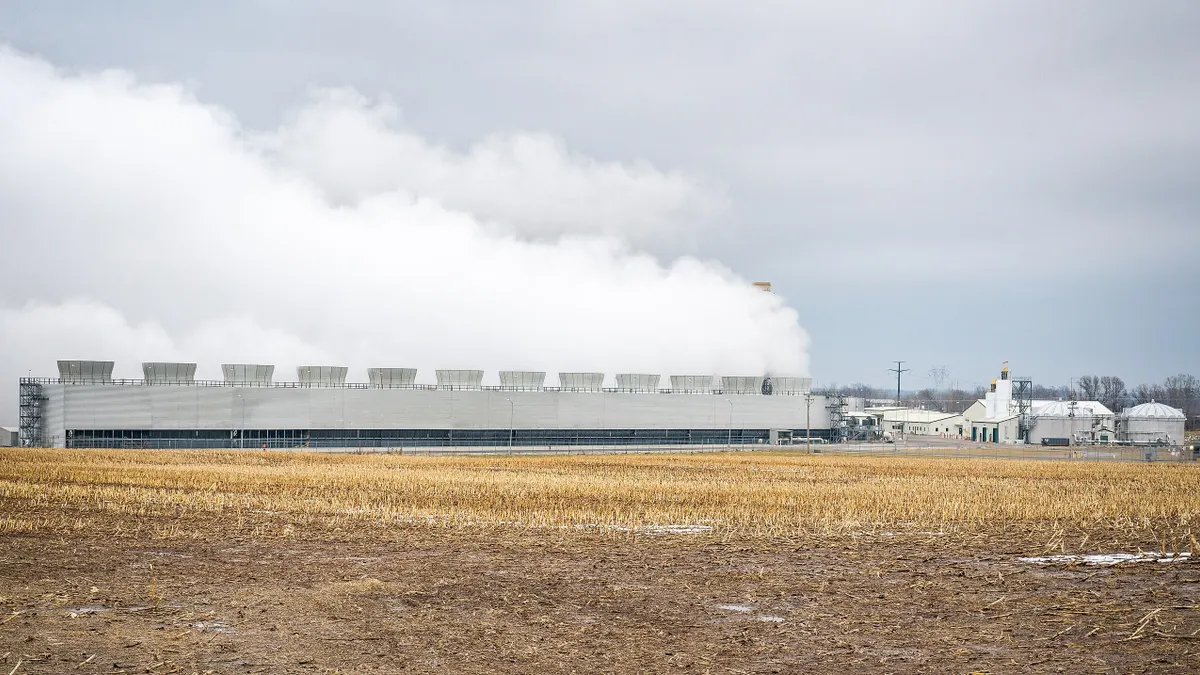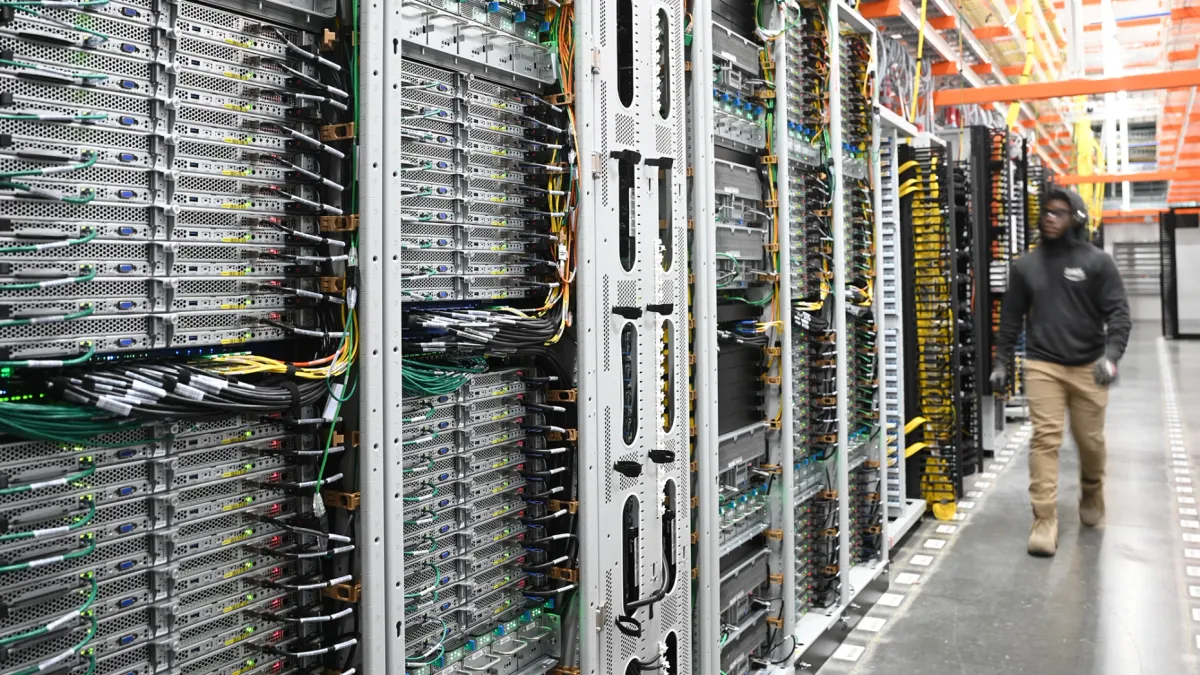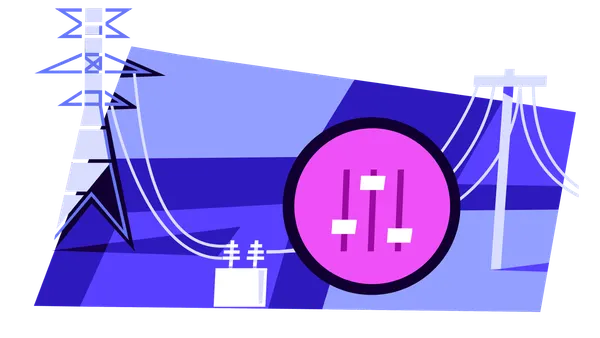The U.S. power industry has been under growing pressure since the late 1990s to reduce greenhouse gas emissions. The subsequent growth in renewable energy, spurred by state mandates, federal tax incentives, and increasingly attractive costs, has shifted attention to the use of energy storage to ensure that variable wind and solar generation reliably serve load and provide ancillary services.
In this domain, lithium-ion currently dominates. But some analysts don't see it as economically-efficient enough at scale to fully support the amount of renewable energy expected to come onto the grid, and other options are on the rise, including rail-based gravity systems, hydrogen and flow batteries.
Bulk energy storage
Since the 1890s, pumped hydropower has been the overwhelming choice for bulk energy storage, and at the end of 2017, about 22 GW of pumped hydro was installed in the United States. After pumped hydro, compressed air energy storage (CAES) is the choice for bulk power management, said Nate Blair, manager of the Distributed Systems and Storage Analysis Group at the National Renewable Energy Laboratory.
But both systems are capital-intensive and constrained by geography. To serve the booming demand for reliable, widely available and inexpensive storage on a smaller scale, batteries have been the default for power producers.
Huge banks of lithium-ion (Li-ion) batteries have been the go-to for energy storage, but an April explosion at an Arizona Public Service 2 MW Li-ion battery energy-storage facility highlighted the technology's fire-safety issues. Some developers are looking at alternative storage systems to support what used to be called alternative energy.
Lithium-ion alternatives
At the end of 2017, 708 MW of large-scale battery capacity were operating in the U.S., according to the U.S. Energy Information Administration. The future of energy storage can be seen in the plans Arizona Public Service announced last February — by 2025, the utility intends to add 850 MW of energy storage to its existing 6 MW fleet.
But can alternatives make inroads?
There are a large number of energy storage systems besides electrochemical batteries, including thermal, kinetic and gravity, among other technologies. In November 2018, Switzerland-based Energy Vault rolled out its utility-scale gravity system, one of the newest entrants to the energy-storage market.
The Energy Vault system consists of a crane with two to six arms mounted on a lattice-steel tower 90 to 140 meters tall. Operating on the same principle as a pumped-hydro system, the crane hoists 35 metric ton concrete "bricks" into stacks surrounding the tower to charge the system. To discharge stored energy, software algorithms direct the crane to lower bricks to the ground.
Typically, an Energy Vault system would be powered by a nearby solar farm or other renewable energy. The system can respond in milliseconds to fluctuations in power demand or other support required by the grid operator, CEO and co-founder Robert Piconi told Utility Dive via email. And like pumped hydro, the system offers long-duration energy storage.
The system enables renewables to deliver baseload power for less than the cost of fossil fuels 24 hours a day, according to a company news release.
"Since our November [2018] launch, we received a tremendously positive market response from customers across the globe," Piconi wrote. Investors Cemex Ventures and Softbank Vision Fund also are supporting it. "We recently announced the Series B investment from Softbank Vision Fund of $110 million, which closed in July 2019," he wrote. "Now we can scale on a global, multi-continent basis."
More gravity-based systems
One company, Advanced Rail Energy Storage (ARES) North America, aims to provide what it calls advanced rail energy storage. The company has two gravity systems in the works — Trainline and Ridgeline.
ARES is developing a 50 MW Trainline shuttle system in Nye and Clark counties in Nevada, using distributed electric locomotives running 5.5 miles on an average 7% slope. Six "consists," or trains, each composed of two locomotives and seven mass cars weighing 1,550 tons each, will draw electric power from the grid using a third rail to drive the consist's motor on the uphill storage run. On the return, regenerative braking systems generate power and the motor becomes a generator discharging the power back via the third rail.
"The response time for Trainline itself is 10-15 seconds," said Russ Weed, ARES chief development officer. "It's not quite as fast as an electrochemical battery, but the Trainline would be paired with either supercapacitors or a small battery, such that response time could go to four seconds or less."
Trainline was piloted in California, so the Nevada development is a demonstration, he added. "By the end of 2020, we are aiming to complete construction." The plan is for Trainline ultimately to be powered by renewable energy.
Ridgeline will operate in the same way as Trainline but with centralized electric pullies and cable on a steeper grade. It is not yet sited, but "we're in discussions with some utilities about it," Weed said. He expects completion of the Ridgeline by Q1 2021 at the latest.
And researchers are examining other potential sources of gravity-based energy storage.
Using mountains could be a viable way to store electricity for longer durations and at larger scales than lithium-ion batteries and prove to be economically attractive for microgrids, islands and areas with high electricity costs, according to a study recently published in the academic journal Energy.
Hydrogen as a storage proxy
Mitsubishi Hitachi Power Systems (MHPS) and partner Magnum Development last May announced what they claim will be the world's largest renewable energy storage system. The Advanced Clean Energy Storage (ACES) project will develop 1,000 MW of 100% clean energy-based storage using renewable hydrogen.
The ACES project will deploy four types of clean energy at utility scale: renewable hydrogen, compressed air energy storage (CAES), large-scale flow batteries and solid oxide fuel cells. "The technologies we are deploying will store electricity on time scales from seconds to seasons of the year," said Paul Browning, President and CEO of MHPS Americas, in a statement.
The project will be in central Utah, where Magnum Development owns salt domes adjacent to the Intermountain Power Project. Magnum currently operates five salt caverns for liquid fuels storage and is developing CAES and renewable hydrogen options.
For ACES, MHPS will "create hydrogen from variable, renewable resources," said Mike McManus, MHPS senior director.
Hydrogen is "an excellent medium to store energy long-duration because it doesn't degrade over time, like a battery if you just let it sit," he added. "For example, we can use solar energy through electrolysis, which uses water, to separate oxygen and hydrogen. We would take the hydrogen, now in a pure form, store that in a cavern at pressure, then, when we need it, we can bring it back out, combust it in a gas turbine or in a fuel cell."
"We can also blend that hydrogen with a natural-gas supply to reduce the carbon footprint of that natural-gas supply," McManus said. The hydrogen stored in salt domes thus is a proxy for energy storage. It is used to generate carbon-free power in the fuel cell and to reduce the emissions profile of the combustion turbine.
The flow battery will store renewable energy from solar and wind to be released back to the grid as electrical energy when desired. It will be used typically for six to 12 hours of energy storage. But the various storage systems in this project are better for mid-term to long-term storage than Li-ion at superbulk level, McManus said.
"As soon as you get out of load-shifting from the middle of the day to evening, the economics are overwhelmingly better for a solution like this," said McManus. "We can store hydrogen equivalent to 100,000 MWh of electricity in one cavern" and then create more than 70 of those caverns, creating "a very significant amount of storage capability" that can be used as dispatchable power.





















